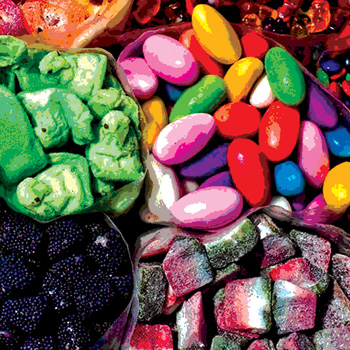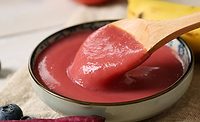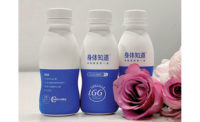The U.S. Food and Drug Administration (FDA) has sought to limit or ban the presence of lead in food at various points in history dating back to the passage of the Federal Food, Drug, and Cosmetic Act (“the Act”) in 1906. In the 100-plus years since the Act was signed into law, great progress has been made in reducing dietary intake of lead. In fact, most people in the U.S. can eat what they like, when they like, without concern about ingesting lead. However, FDA occasionally encounters a product for which lead exposure is an issue. This article provides an overview of efforts to reduce lead levels in foods and presents the recently addressed example of certain Mexican-style candies with high lead levels as an illustration of the need for targeted industry education and enforcement actions.
Background
Many people would be surprised to learn that until the post-World War II era, nearly all apples sold in the U.S. were treated with lead in the form of lead arsenate. This was done to protect the fruit from the codling moth, whose larvae would bore into the apples. Left unchecked, the larvae would damage large portions of the apple crop. The treated apples were subjected to an acid-wash process to remove residues of lead arsenate and make the apples safe to consume. FDA monitored lead levels in apples and apple products closely during this era to ensure the lead arsenate was being sufficiently removed. Eventually, other pesticides were developed to control the codling moth.
Two significant indirect sources of lead in the typical U.S. diet through much of the 20th century were leaded gasoline and lead-soldered cans. Vehicles using leaded gasoline produced emissions that contained lead. These emissions accumulated in the environment and added significant amounts of lead to food crops and to the fields in which feed animals grazed. In 1973, in response to lead reduction standards issued by the Environmental Protection Agency, the U.S. began to phase out leaded gasoline. This resulted in a significant drop in the environmental lead burden and in turn lowered levels of lead in the average U.S. consumer’s diet.
Another important step in reducing dietary lead levels began in the late 1970s with the food industry’s gradual conversion from lead-soldered cans to welded cans. This conversion was completed by the industry in 1991, and FDA formally banned the sale of food packed in lead-soldered cans in 1996.
By the early 1990s, data from FDA’s Total Diet Study showed that lead levels in the U.S. food supply had been dramatically reduced. For some age and gender groups, lead levels had decreased by more than 95% over a 20-year period. To put this into a larger public health context, by the mid-1990s, diet-ary lead levels for all age and gender groups had been minimized to the point that they did not significantly contribute to blood lead levels associated with health concerns.
In the 1990s, FDA undertook additional efforts to ban or restrict uses of lead in association with food, including lowering the limit for lead in bottled water, lowering the action level for leachable lead in ceramicware, setting an enforcement level for lead in wine, and prohibiting the use of lead foil seals for wine bottles. However, subsequent Total Diet Study data did not indicate additional significant decreases in lead levels. This leveling off suggests that the efforts to reduce exposures to lead by switching from leaded gasoline and lead-soldered cans effectively targeted the most significant, addressable sources of dietary lead exposure. Current dietary lead exposure in the general population likely reflects lead present in food at background levels due to its ubiquitous presence in the environment rather than to any avoidable contamination of food.
Isolated Exposures
While efforts to reduce dietary lead exposure for the general population have been largely successful, some individual consumers or groups of consumers—often recent immigrants and their families who use poor-quality products from abroad—may occasionally encounter foods containing significantly elevated lead levels. Most such incidents are isolated in that they involve products personally brought into the U.S. or products imported in limited quantities.
In 1994, FDA began to encounter candy products from Mexico packaged in wrappers containing lead-based printing inks. Most of these wrappers were designed so the ink was either on the outer surface of the wrapper or between layers of laminated plastic and thus, could not leach into the actual candy. Unfortunately, a few of the wrappers were poorly designed or had defects in their materials that allowed significant amounts of lead to migrate into the candy.
At the same time FDA was scrutinizing the wrappers, it began testing significant numbers of Mexican-style candy products for the first time. Mexican-style candy is unique compared to traditional candy sold in the U.S. in that it frequently contains minimally processed ingredients such as chili (the pod of any species of capsicum) and tamarind, and can contain salt as a primary ingredient. FDA tests revealed that these Mexican-style candy products contained higher levels of lead than did traditional sugar-based candy, regardless of whether or not the wrapper contained lead-based printing inks.
Although the exact source of the lead had not been established, FDA officials surmised that the elevated lead levels in the candies might be due to their containing minimally processed ingredients. Whereas the manufacturing process for a highly refined ingredient like sugar essentially purifies the product, ingredients that undergo only minimal processing are more likely to retain low levels of contaminants, such as soilborne or dust-bound lead, from their growing environments.
In 1995, FDA published a guidance document in the form of a letter to manufacturers, importers, and distributors of imported candy and candy wrappers.[1] The letter discussed FDA’s findings related to lead-based printing inks on candy wrappers and the issue of lead in candy itself. In the letter, FDA urged members of industry to refrain from the use of lead-based printing inks in their packaging materials and informed them that FDA regarded candy wrappers that leach any lead component of a lead-based printing ink into food to be in violation of the Federal Food, Drug, and Cosmetic Act and subject to FDA enforcement action. In response to FDA’s letter, many candy manufacturers converted their wrapper designs to those that do not use lead-based inks. It has been nearly 13 years since FDA last encountered a candy wrapper known to leach lead from its printing ink into candy.
The letter stated that candy products with more than 0.5 parts per million (ppm) of lead could constitute a basis for FDA regulatory action against the product in cases where frequent consumption of the candy by small children could be anticipated. At the time, 0.5 ppm was the guideline for lead levels in sugar (the main ingredient in most candy), established by the National Academy of Sciences’ Food and Nutrition Board of the Institute of Medicine and published in the Food Chemicals Codex. FDA acknowledged that some candies contain significant amounts of less-refined ingredients, such as chili powder, which may have higher levels of lead than highly refined ingredients, and reminded manufacturers of these products that they needed to establish controls to ensure that using such ingredients did not result in unacceptable levels of lead in the candy itself.
In the years that followed, FDA gained a greater understanding of measures that could be taken to reduce lead levels in Mexican-style candy, and determined that additional steps could be taken to reduce exposure from candy consumed by children. During this time, the National Academy of Sciences reduced its guideline for lead levels in sugar to 0.1 ppm. In March 2004, FDA issued another letter to manufacturers, importers, and distributors of imported candy. FDA reiterated that continuing to reduce lead levels in food was in the interest of public health, adding that the agency intended to publish a guidance document that would lower the level for which FDA would consider taking enforcement action against candy products containing lead.
FDA issued its revised recommendations for the maximum lead level in candy, lowering it to 0.1 ppm in a guidance document entitled “Lead in Candy Likely To Be Consumed Frequently by Small Children: Recommended Maximum Level and Enforcement Policy.” The guidance was issued in draft form for public comment in December 2005 and as a final guidance in November 2006.[2] In establishing this new guideline, FDA took into account both public health protection considerations and the extent to which the use of good manufacturing practices (GMPs) can be expected to remove lead from products grown in or obtained from environments that naturally contain lead. The agency considered this new level both to be achievable under GMPs, and to be protective against a significant health risk if the candies were eaten frequently.
FDA also explained its intention to consider several factors when determining whether to bring an enforcement action against a manufacturer regarding lead in candy. Those factors included the level of lead present in the candy, the best available consumption data, and the lead exposure that would result from consumption of the candy.
In a supporting document[3] published with the guidance, FDA noted that one of the principal sources of lead in Mexican candy had been shown to be soilborne lead remaining on chilies that were not washed during processing. The other significant source of lead was mined salt. Not all sources of mined salt contain lead, but some do. FDA noted that candy manufacturers could ensure that their products met the new FDA guideline by working with their suppliers to ensure that the sourcing and processing of the ingredients was appropriate given the ingredients’ intended use in candy. By making sure that their suppliers washed the chilies before grinding them, lead levels in candy containing chili could be substantially reduced. Similarly, obtaining salt from sources with low levels of naturally occurring lead could also substantially reduce the lead level of the candy.
The guidance level of 0.1 ppm lead, which remains in place today, applies to all candies sold in the U.S.; however, most manufacturers of the sugar-based and chocolate candies that are more traditionally found in the U.S. already had practices in place prior to 2006 to make certain that the level of lead in their products was insignificant.
Stakeholder Cooperation
Achieving food safety goals often involves the efforts of many parties, and the goal of reducing lead levels is no exception. The State of California has set strict limits on lead in candy and established a program to monitor lead levels in imported candy.
One effect of the 2006 FDA guidance was that it created a need for laboratory facilities in Mexico capable of carrying out sophisticated tests on samples from production lots of chilies to verify that lead levels in finished chilies are consistent with product that has been washed. FDA, the State of California, and several U.S.-based companies that produce Mexican-style candy in Mexico provided technical assistance toward establishing such laboratory capabilities.
Significant progress has been made in reducing lead levels in Mexican-style candy. Prior to the 2006 guidance, products from some of Mexico’s largest candy companies contained elevated lead levels. While candies that exceed the 0.1 ppm guideline are found occasionally, the frequency of these occurrences has diminished and incidents tend to involve products made by smaller manufacturers.
FDA regularly monitors Mexican-style candy products offered for import into the U.S. If the agency finds an entry with lead levels of concern, the product is refused admission into the U.S. Future shipments of the product are also blocked until the product’s manufacturer shows that it has corrected its contamination problem and new shipments are in compliance with U.S. regulations.
Conclusion
Keeping lead out of food is a different type of challenge now than it was 40 years ago as fewer products contain high lead levels, yet certain individuals within the U.S. tend to be at greater risk for exposure to them. Products with elevated lead levels are now more likely to be imported and preferentially used by individuals who grew up outside the U.S and ate these types of products while growing up. In this new era of global food trade, FDA will have to acquire a better understanding of food ingredients and food production practices in other countries. Some countries have not imposed controls on uses of lead within their own borders. Given the potential for lead to be used in a wide variety of agricultural and industrial applications abroad, increased food imports from countries that have yet to put lead exposure controls in place for their own populations could potentially raise U.S. consumers’ exposure to lead once again. Unlike the 1970s, when two well-understood sources of lead in food gave cause for concern, we do not know precisely where we will need to turn our prevention efforts next.
Michael E. Kashtock, Ph.D. is a Senior Advisor in the Plant Products Branch in FDA’s Center for Food Safety and Applied Nutrition (CFSAN). In his 30-year career with FDA, he has contributed to the agency’s food safety mission as a laboratory scientist, manager and regulatory policy expert.
Sebastian Cianci is a policy analyst and a member of CFSAN’s Office of Food Defense, Communication and Emergency Response. He has worked for FDA for 19 years and serves as the Center’s trade press liaison.
References
1. Guidance for Industry—Letter to Manufacturers, Importers, and Distributors of Imported Candy and Candy Wrappers.
www.fda.gov/Food/GuidanceComplianceRegulatoryInformation/GuidanceDocuments/ChemicalContaminantsandPesticides/ucm077914.htm
2. Guidance for Industry—Lead in Candy Likely To Be Consumed Frequently by Small Children: Recommended Maximum Level and Enforcement Policy. www.fda.gov/Food/GuidanceComplianceRegulatoryInformation/GuidanceDocuments/ChemicalContaminantsandPesticides/ucm077904.htm.
3. Supporting Document for Recommended Maximum Level for Lead in Candy Likely To Be Consumed Frequently by Small Children.
www.fda.gov/Food/FoodSafety/FoodContaminantsAdulteration/Metals/Lead/ ucm172050.htm.
Reducing Lead Exposure from Food




